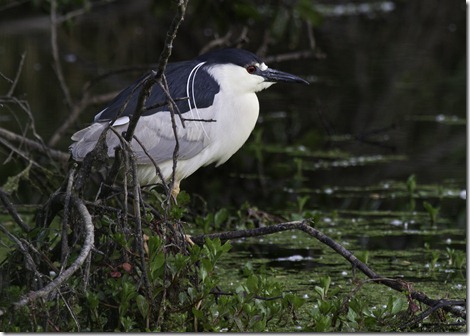Phil’s Photo Monday
Black Crowned Night Heron
Cool Facts
Young Black-crowned Night-Herons often disgorge their stomach contents when disturbed. This habit makes it easy to study its diet.
The Black-crowned Night-Heron may nest in the same tree with ibises or other herons.
Adult Black-crowned Night-Herons apparently do not distinguish between their own young and those from other nests, and will brood chicks not their own.
Habitat
Marsh
Various wetland habitats, including salt, brackish, and freshwater marshes, swamps, streams, lakes, and agricultural fields.
Food
Fish
Aquatic invertebrates, fish, amphibians, lizards, snakes, rodents, eggs, and other foods.
Nesting
Nesting Facts
Clutch Size
1–7 eggs
Egg Description
Greenish
Condition at Hatching
Eyes open, partially covered in white and gray down.
Nest Description
A platform of sticks placed in tree or cattails. Nests colonially; more than a dozen nests may be in a single tree.
Nest Placement
Tree
Behavior
Stalking
Grasps prey; does not stab with bill.
Conservation
status via IUCN
Least Concern
Overall, populations stable. Because of wide distribution and feeding habits, the Black-crowned Night-Heron is an excellent indicator of ecosystem health. You can help scientists learn more about this species by participating in Celebrate Urban Birds!
Source: http://www.allaboutbirds.org/guide/Black-crowned_Night-Heron/lifehistory

 (916) 434-2759
(916) 434-2759



